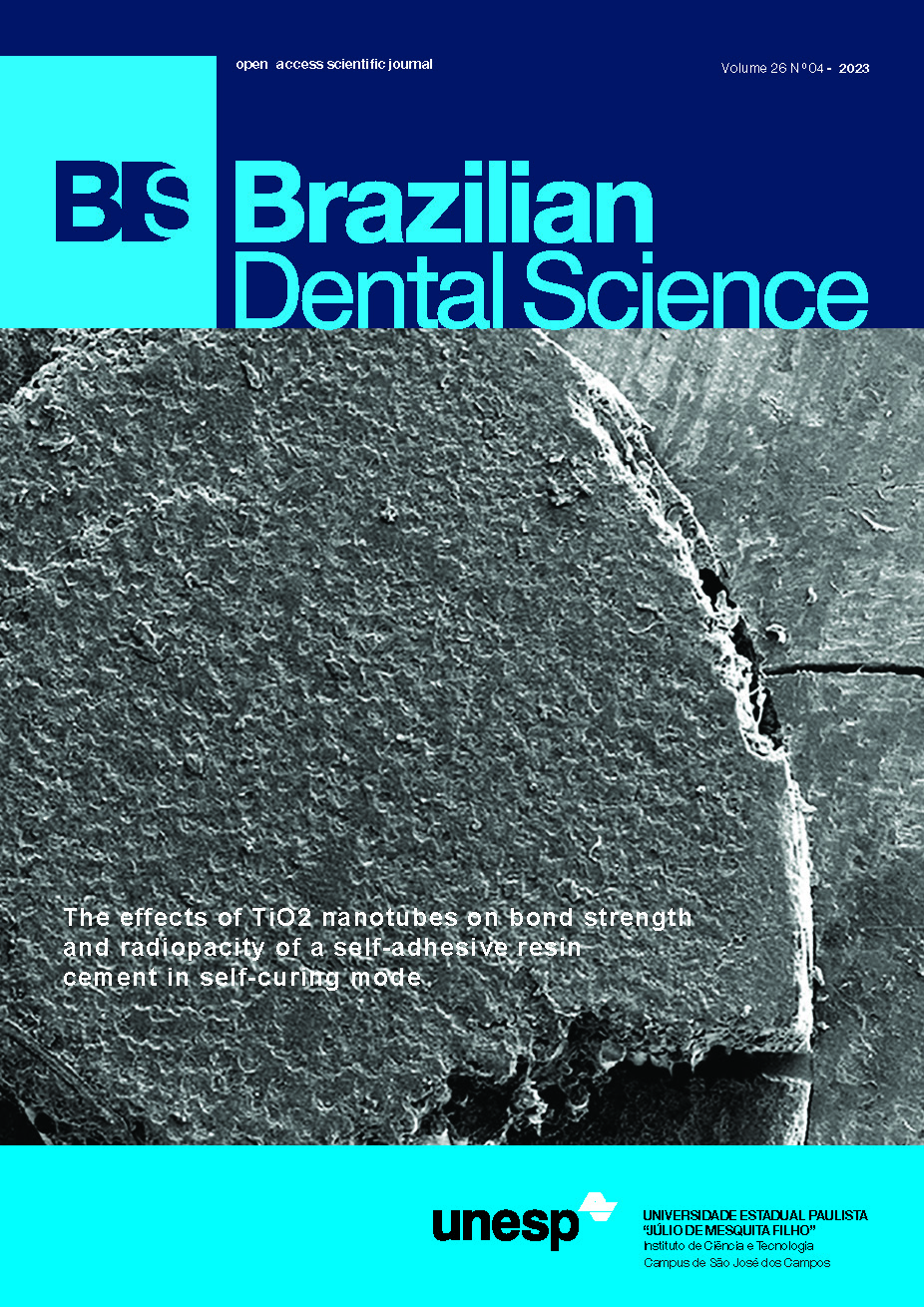Deep occlusal carious lesions clinical management by Brazilian dentists: a nationwide e-survey
DOI:
https://doi.org/10.4322/bds.2023.e3735Abstract
Objective: To investigate the clinical management of deep occlusal carious lesions in permanent teeth by Brazilian dentists. Material and Methods: This cross-sectional study included a sample of 732 Brazilian dentists who responded to an electronic questionnaire composed of 20 questions addressing socio-demographic information, training and professional activity characteristics, and clinical management of deep carious lesions. Descriptive analysis was performed, considering relative and absolute frequencies and 95% confidence intervals. The association between the dentists’ variables of interest (age group, type of higher education institution, years in practice, highest academic degree completed and main sector of professional activity) and the mean number of incorrect answers regarding deep carious lesions management was analyzed by Analysis of Variance (ANOVA), followed by the Bonferroni post-test (p<0.005). Results: Stepwise removal was the strategy pointed out by most dentists (42.8%). However, 16% of the dentists selected nonselective carious tissue removal. Furthermore, 45.6% of the dentists disagreed with maintaining carious tissue over the pulp in deep lesions with a risk of pulpal exposure. When using instruments to remove carious dentine, 17% of the dentists chose a diamond burn while 13% preferred tungsten carbide burs. Dentists who graduated from public institutions had a lower mean of non-conservative decisions than those from private institutions. Dentists with master’s or doctoral degrees were more conservative, as well as dentists from public service compared to those from the private sector. Conclusion: The dissemination of conservative approaches in the management of deep carious lesions needs to be strengthened and increasingly based on updated scientific literature.
KEYWORDS
Dental caries; Dental pulp capping; Dentists; Dentistry; Evidence-based practice.
Downloads
Published
How to Cite
Issue
Section
License
Brazilian Dental Science uses the Creative Commons (CC-BY 4.0) license, thus preserving the integrity of articles in an open access environment. The journal allows the author to retain publishing rights without restrictions.
=================




























